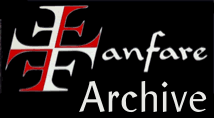SUSMAN Camille. Clouds and Flames. Motions of Return. The Starry Dynamo ● Piccola Academia degli Specchi ● BELARCA 007 (47:01)
On the face of it this album of chamber works by the accomplished Chicago-born composer/pianist William Susman is very accessible, delivering ingenious variations on Minimalism’s familiar techniques from a confident and fertile musical imagination. But bit of exploration into Susmnn’s biography reveals an intriguing story, a capsule history, in fact, of where modern American music has traveled over the past decades.
Born in 1960, Susman studied both classical and jazz piano. He is probably the only performer who learned from both a student of Artur Schnabel’s (Pauline Lindsey) and a pianist with Louis Armstrong (Steve Behr). He founded his own jazz ensemble when he was 13 and later performed with big bands and Afro-Cuban groups. That’s merely the beginning of a complex web of influences that led him to gravitate toward Xenakis and Ligeti in the Eighties. At 25 he enjoyed a major breakthrough by becoming the youngest composer to be awarded a commission from Harvard’s prestigious Fromm Foundation. There were graduate studies in computer-generated music at Stanford and an invitation from Pierre Boulez to engage with IRCAM in Paris.
For a composer rooted in the European avant garde, using arcane methods based, for example, on Fibonacci sequences to generate rhythmic repetitions, his eventual encounter with American Minimalism came as an “aesthetic shock” and a kind of spiritual awakening. In a booklet note Susman relates that “The way Riley, Reich, and Glass incorporated the things they liked—Indian or African influences, for example into their music led me to think about the things I knew and admired.”
As listeners we are so accustomed to following our personal tastes that it might be hard to relate to a young composer tightly identified with mid-century Modernism (and receiving commissions and praise for adhering to that idiom), but Susman’s awakening moment was a kind of liberation. In a much publicized shift, another arch Modernist, the conductor Esa-Pekka Salonen, had a similar conversion to Minimalism as a composer.
In none of these cases does the shift represent a move from complexity to simplicity. No one could be more theoretical than Glass or more steeped in the Modernist styles he rejected. The hidden texture inside today’s Minimalism consists of personal and private influences being brought to bear. For Susman, his style today is inspired by Afro- Cuban montuño, medieval hocket and isorhythm from the École de Notre-Dame de Paris, and jazz.
I’ve gone into these facets out of fascination but also to illustrate how these four chamber works came about—you couldn’t guess it by ear alone. The instrumentation varies from a duo for flute and piano (Motions of Return) to a standard piano trio with violin and cello (Clouds and Flames), with a sextet, Camille, and quintet, The Starry Dynamo, that call upon the largest complement of the Rome-based ensemble, Piccola Academia degli Specchi (Little Academy of Mirrors), which is flute, alto saxophone, violin, cello, and two pianists (they play four-hand in Camille). While listening to Camille, which opens the program, I thought that Susman should consider writing film scores, because he uses Minimalism to express a range of feelings that can be unusually tender or bold. My impression was justified, as I discovered later, because Susman has composed a number of award-wining film scores.
Needless to say, Minimalism has evolved into more than one thing, and for me, Susman’s version is appealing because it isn’t mechanical and the harmonic shifts don’t occur with glacial slowness. This is quick-witted music guided as much by emotional change as rhythmic and harmonic modulations. The flute and piano duo, Motions of Return, is necessarily fairly monochromatic, so here the focus is on rhythmic changes that might well be mathematically based. The quintet and sextet, since they use piano and alto sax, are more colorful and jazzy, I’d say, although Susman is capable of considerable surprise and unpredictability.
In all, I recommend this release to fans of Minimalism and more broadly to general listeners interested in an intriguing American voice. The performances are energetic and committed, the recorded sound excellent.
Huntley Dent
Four stars: An enjoyable and original version of today’s Minimalism

Fanfare Magazine, March-April 2020 Issue
LISTEN HERE: Apple Music, iTunes, Amazon Music, Spotify and other streaming platforms



